Hi Bay Nature readers! I’m Vishal Subramanyan—a 20-year-old wildlife photographer studying ecology and mathematics at UC Berkeley. I’ve always had a passion for wildlife, and I’ve been using photography as a way to capture that love over the past several years. Today, I’m sharing some of my favorite photos and moments from the field.
1. Sassy bobcat kittens
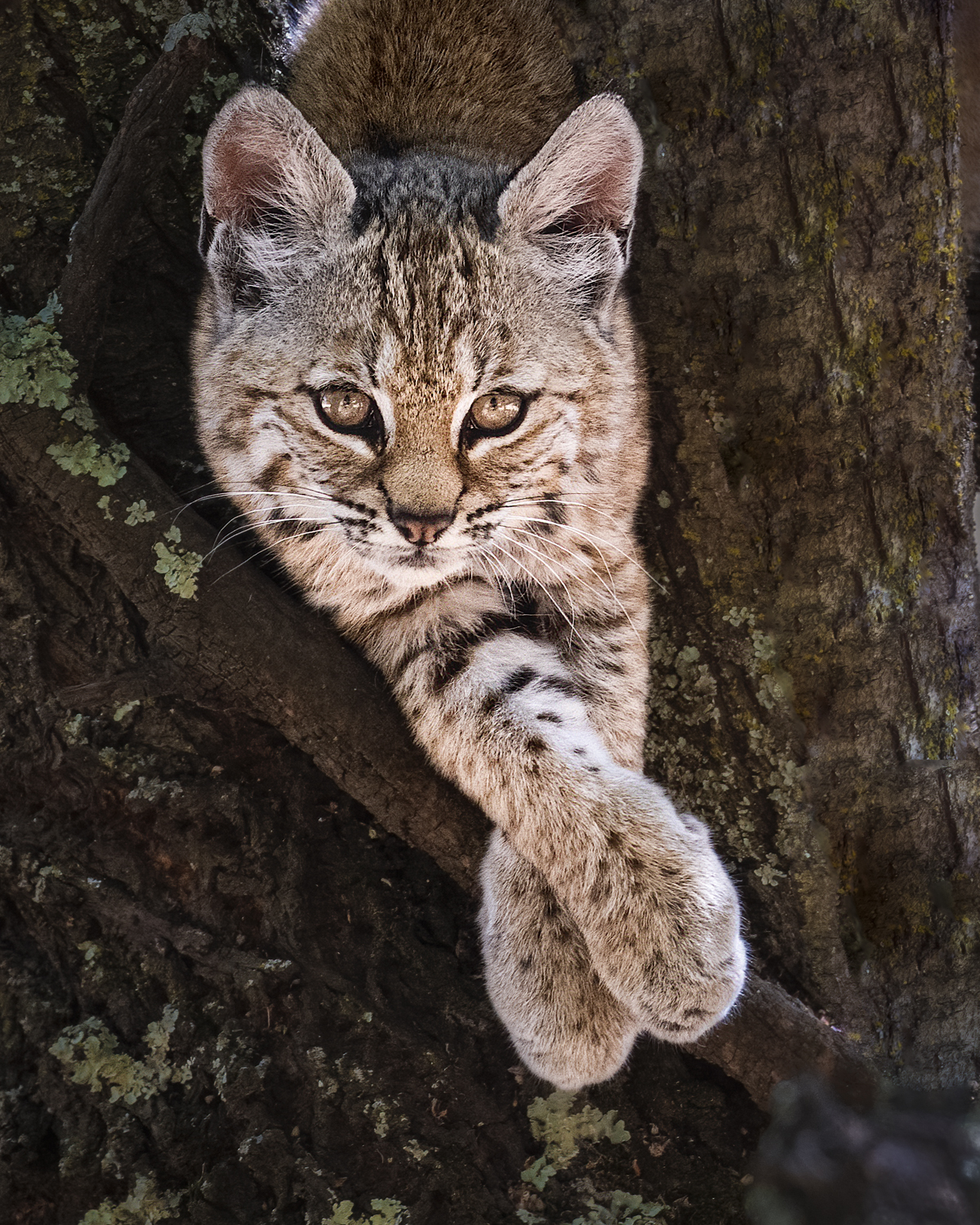
To start off: bobcats! I’ve spent several years and countless hours tracking the East Bay’s bobcats, following families across generations—I even name them. These three photos represent three of my favorite kittens from over the years. You don’t have to go far. But it helps to spend all your spare time in the woods.
Bobcats are common throughout the Bay Area and can often be pretty tolerant of humans. Despite this, they can be very elusive. But with persistence and a bit of luck, you can find them in many areas, even along popular hiking trails.
The first photo is Cheeky, a kitten I named for a swollen cheek she had at a young age. On a hike in a dense wood, my dad spotted Cheeky, her mother, and her two siblings from the trail, and called me over. I quietly sat down and watched the rest of the family eat a squirrel on the shaded, leafy slope below me, while Cheeky rested high up in a tree. After finishing the meal, the mother bobcat called for Cheeky to join them so they could move on. On her way down, Cheeky briefly paused to pose in the fork of the tree.
On the same trail two months later, I captured an image of a kitten I call Peaches. I initially spotted her far downslope, but she disappeared. I was convinced I had lost her. Just as I was about to leave, she appeared right in front of me, looking right at me from behind the grass. Later, she continued to travel along the shaded hillside to practice her hunting.
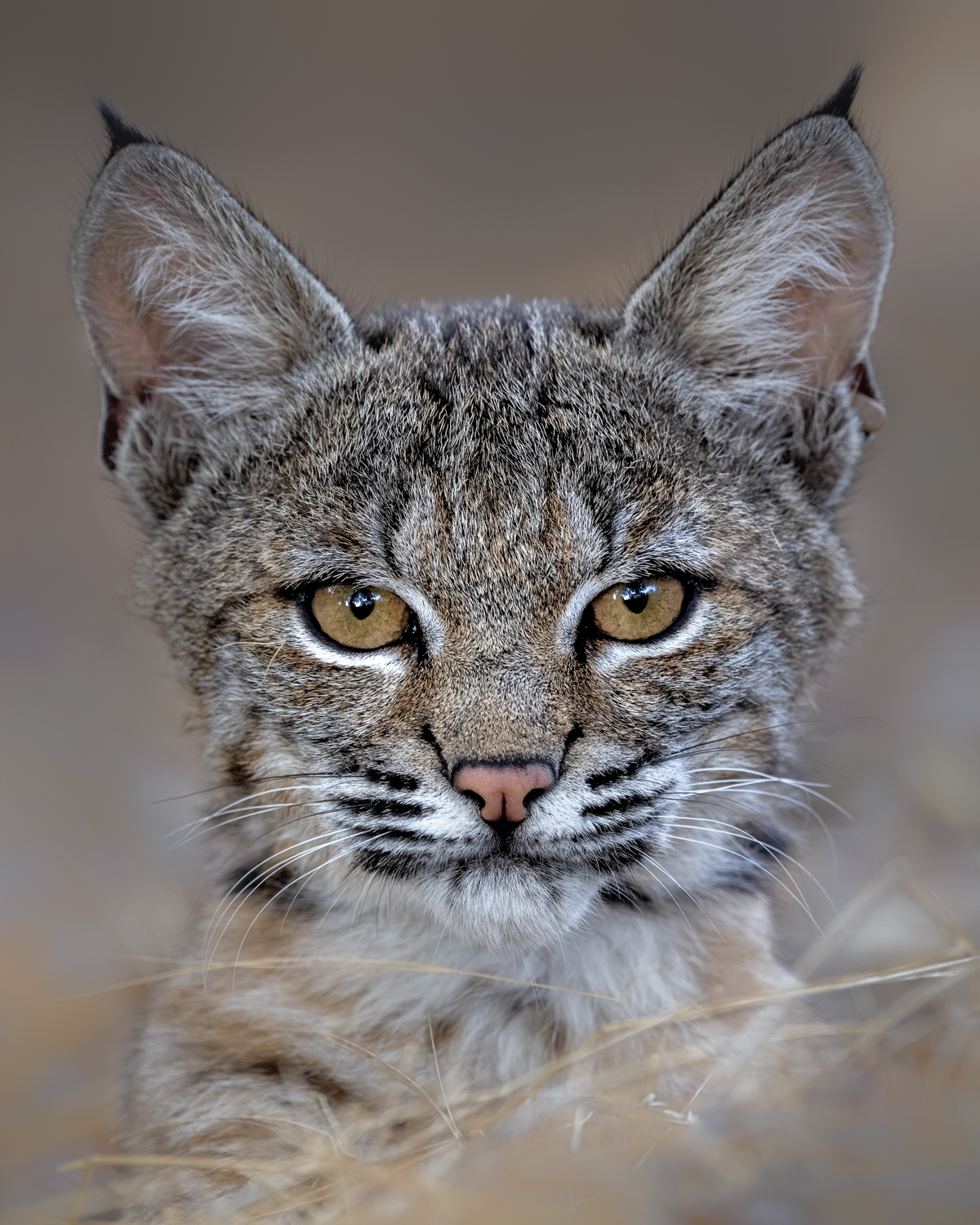
Last, we have Spots, one of the most curious bobcat kittens I’ve known. Named for her uniquely spotted fur, she always seemed fascinated by what people on the trails were doing. One morning, a friend and I were watching Spots and her mother lovingly grooming each other under a tree. Mom then went out to hunt alone, while Spots climbed a sycamore tree right next to the path, probably for safety from coyotes. She found this fork to rest in—and to curiously examine all the hikers walking right below her.

2. River otter surprise
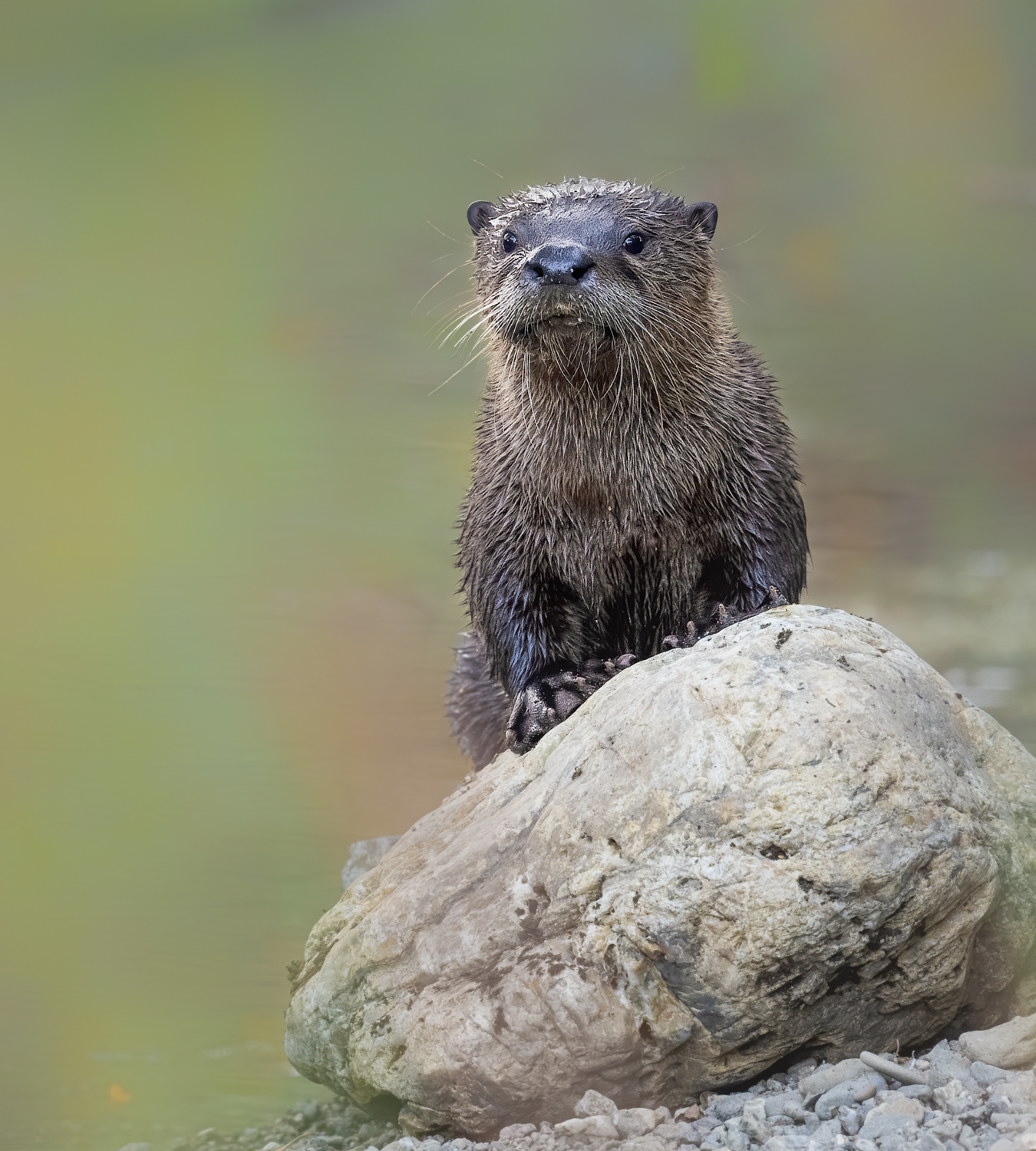
The comeback of river otters in the Bay Area is dramatic. In the mid-1900s, they nearly disappeared, due to fur trapping and polluted waterways. A trapping ban and the 1972 Clean Water Act set the stage for a potential comeback.
But it seems to have taken a few decades. In the early 2000s, people started seeing them more, especially around Marin County. Now river otters can be seen in watersheds across the Bay Area.
In summer 2020, I was hiking along a creek in the East Bay when I had a surprise encounter with an otter and her pup. They were swimming in the shallow creek, trying to catch crayfish. I quietly sat down, and the otters eventually emerged from the water. As mom groomed herself on a sandy bank, the curious pup perched atop a small rock and quizzically looked at me, allowing me to get the first picture.
The second picture is unusual— it’s quite rare to see otters in a tree. On a fall evening, I found the same mother and her pup swimming in a deep pool in the creek. Suddenly, the pup emerged from the water and climbed onto a sycamore tree branch arched over the creek. Soon, the mother joined him and pushed him off the tree back into the water, making a game out of it. They kept it up for a while that evening—it was a joy to see.
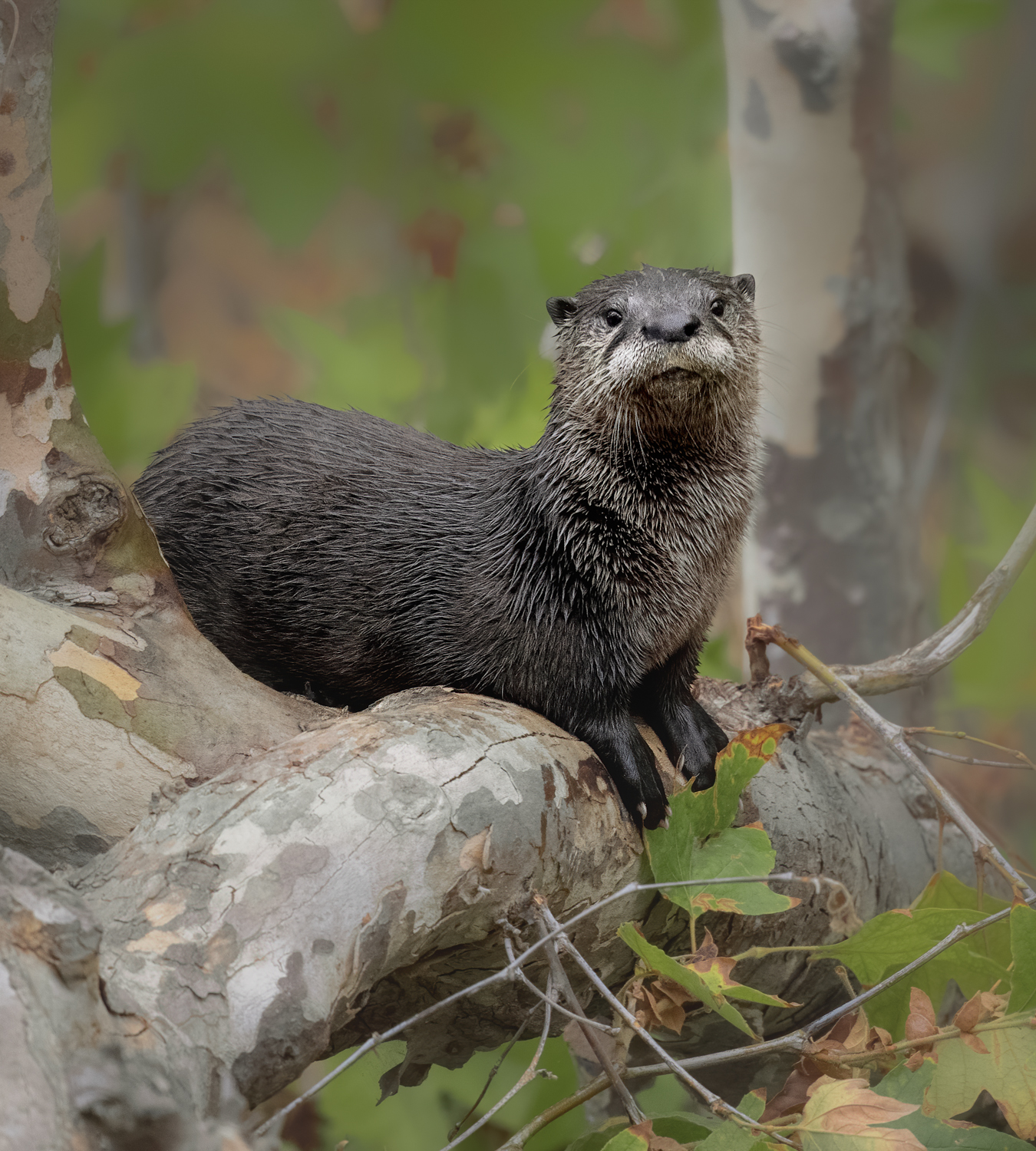
The last photo is the most special, though. For a long time, I really wanted a photo of the otters together. When I found the family again over two months later, they were catching crayfish in the creek. I quietly sat down at the edge and waited for them to emerge from the water. They eventually made their way onto a log just 20 feet away from me. I got to watch and photograph them as they groomed, relaxed and wrestled on that log for the next 15 minutes.
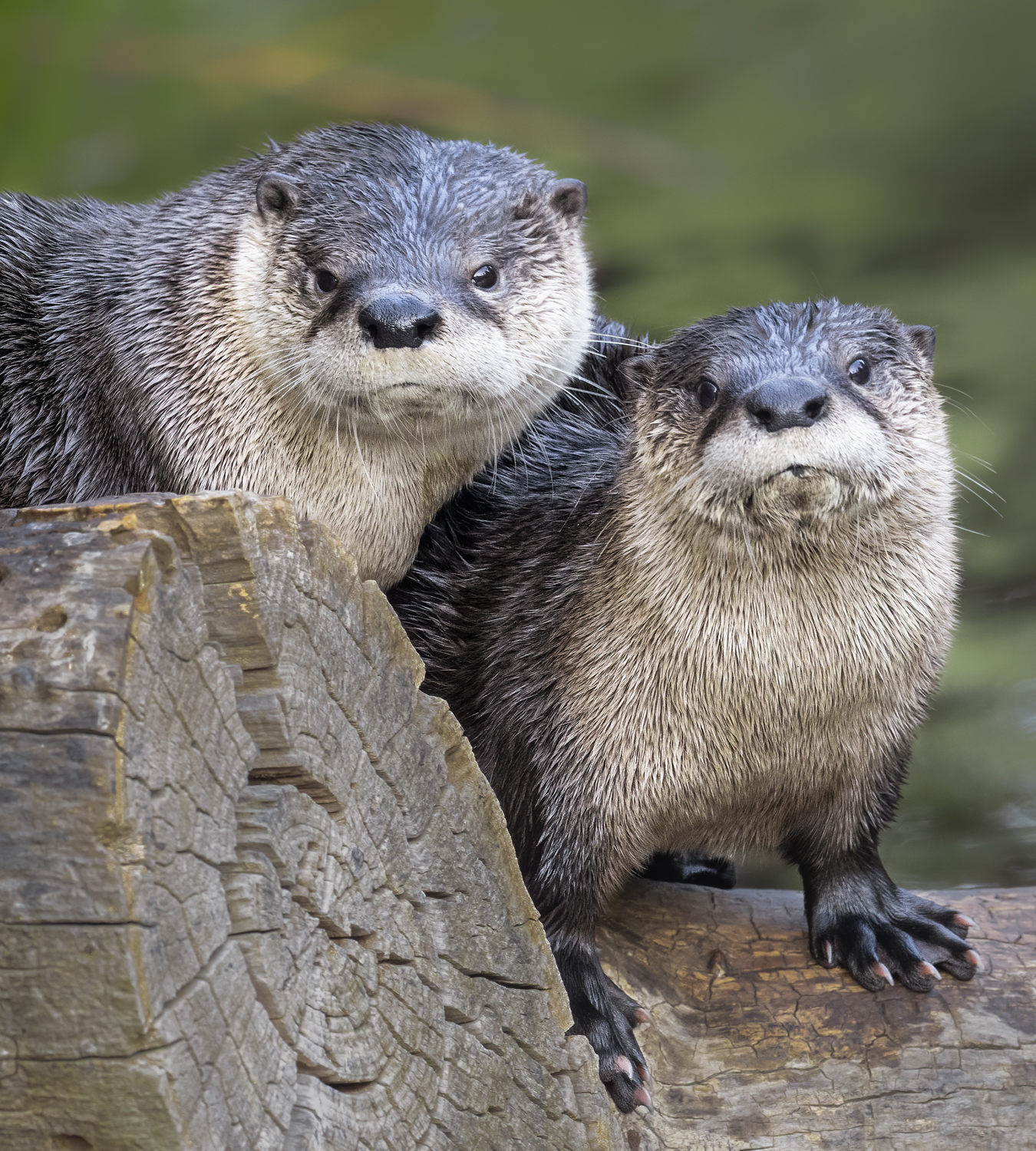
Due to their newfound abundance across the Bay Area, you may be lucky enough to spot a river otter yourself! If you are walking near any streams or rivers, make sure to keep a close eye for these silky swimmers. Often you’ll spot their ripples before you spot the otters themselves. Seeing them is a true joy, and I hope many of you get to experience it!
3. A rainy hike’s payoff
On a wet winter evening, after a long day of classes at UC Berkeley, I headed out with my camera to the East Bay hills. My target was bobcats, which often hunt for gophers right after rains. The rain often damages gopher burrows, and gophers spend time in the open immediately afterward, repairing their burrows. Things that like eating gophers seem to know this.
I thought the rain was done. But as soon as I started hiking, it started up again, and hard—my gear barely survived the rain. At last, about a half-hour before the park gates would close, the rain let up. Drenched and miserable, I was getting ready to head back to my car when I saw this great horned owl hunting from a stump just a few feet above the ground. They normally wait till after sunset to hunt; this owl had come out earlier, thanks to the dark conditions and the rain.
The dark, wet conditions made it very hard to photograph, but I managed to get a few shots as the owl looked my way with his bright, yellow eyes. Then I had to run out so the parking lot gates wouldn’t close on me! It was worth it to get such a close-up, detailed shot of this remarkable bird.

4. A stroke of luck
On a summer morning in 2021, I was watching a great horned owl on the hunt. Perched upon an oak tree branch, he was fixated on something in the field behind me. I took a quick look—and was shocked to see this long-tailed weasel.

Long-tailed weasels are shy, fast, and mostly nocturnal. Hardly anyone ever sees them in the East Bay. Remarkably, I got to watch him for the next two hours as he climbed into sycamore tree cavities, scampered across trails, and even caught a rodent and cached it in a tree.
I spend nearly a dozen hours a week in the field, and have been doing so for the past 5 years, and this remains the only weasel I have seen in the East Bay. I wouldn’t be surprised if this was a once-in-a-lifetime encounter.
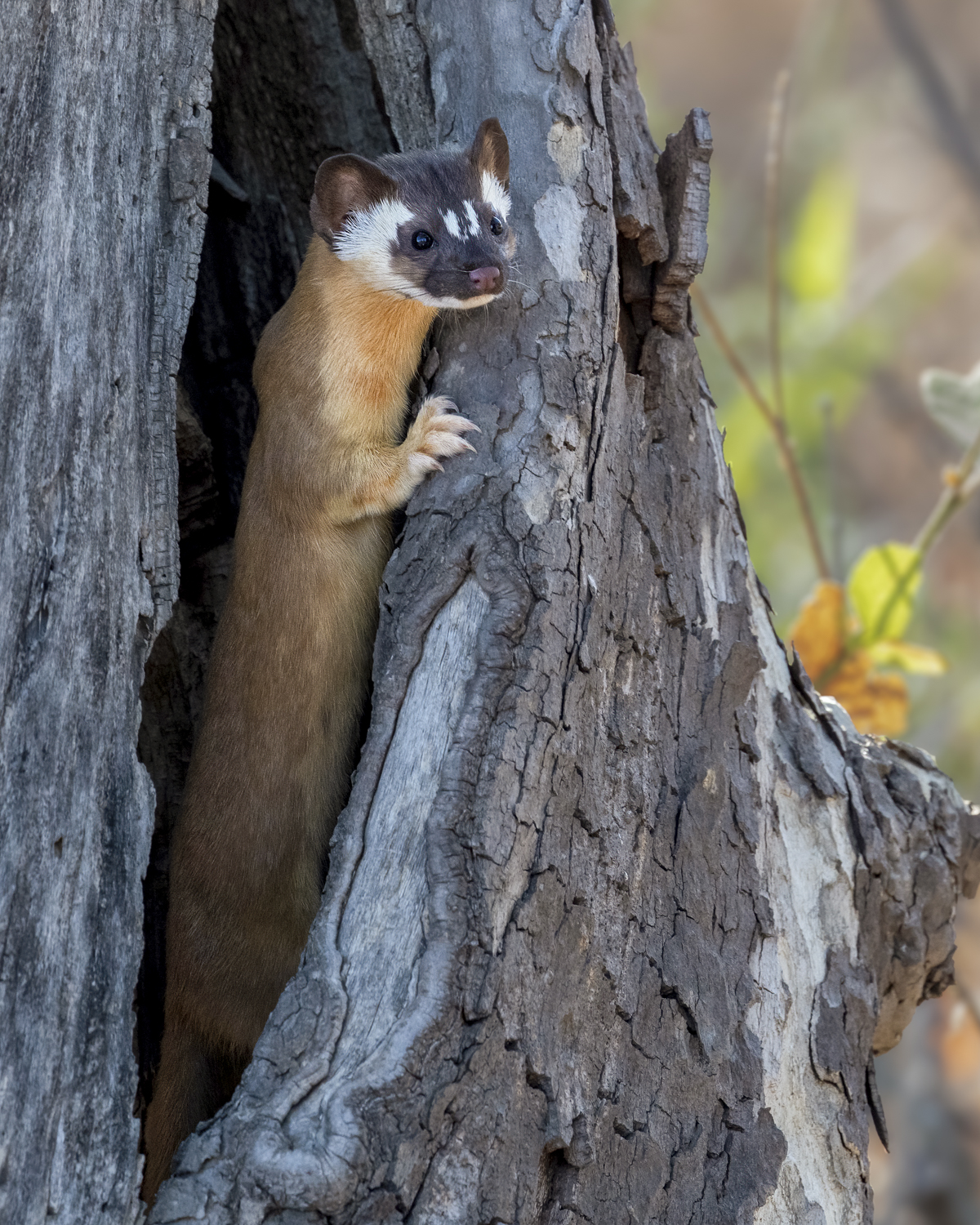
People often think elusive animals like weasels can only be found way off the beaten path, but I was just off a popular hiking trail.
These animals are all around us all the time; we just need to be observant. I always try to read the landscape and behavior of other animals for clues as to where wildlife might be. In this case, the great horned owl showed me to the weasel. In many other cases, ground squirrel alarm calls have helped me find bobcats, foxes, and coyotes. And when I get familiar enough with hiking in an area, I can notice any subtle changes in the landscape that might indicate the presence of wildlife. Using these techniques, you can spot animals that a vast majority of hikers would miss.
In this encounter like many others, other hikers often see me and ask me what I am watching. I was able to share this special encounter with quite a few hikers. Sharing encounters like these is what makes wildlife photography so gratifying for me. I can give people a glimpse of wildlife they may rarely or never see themselves.
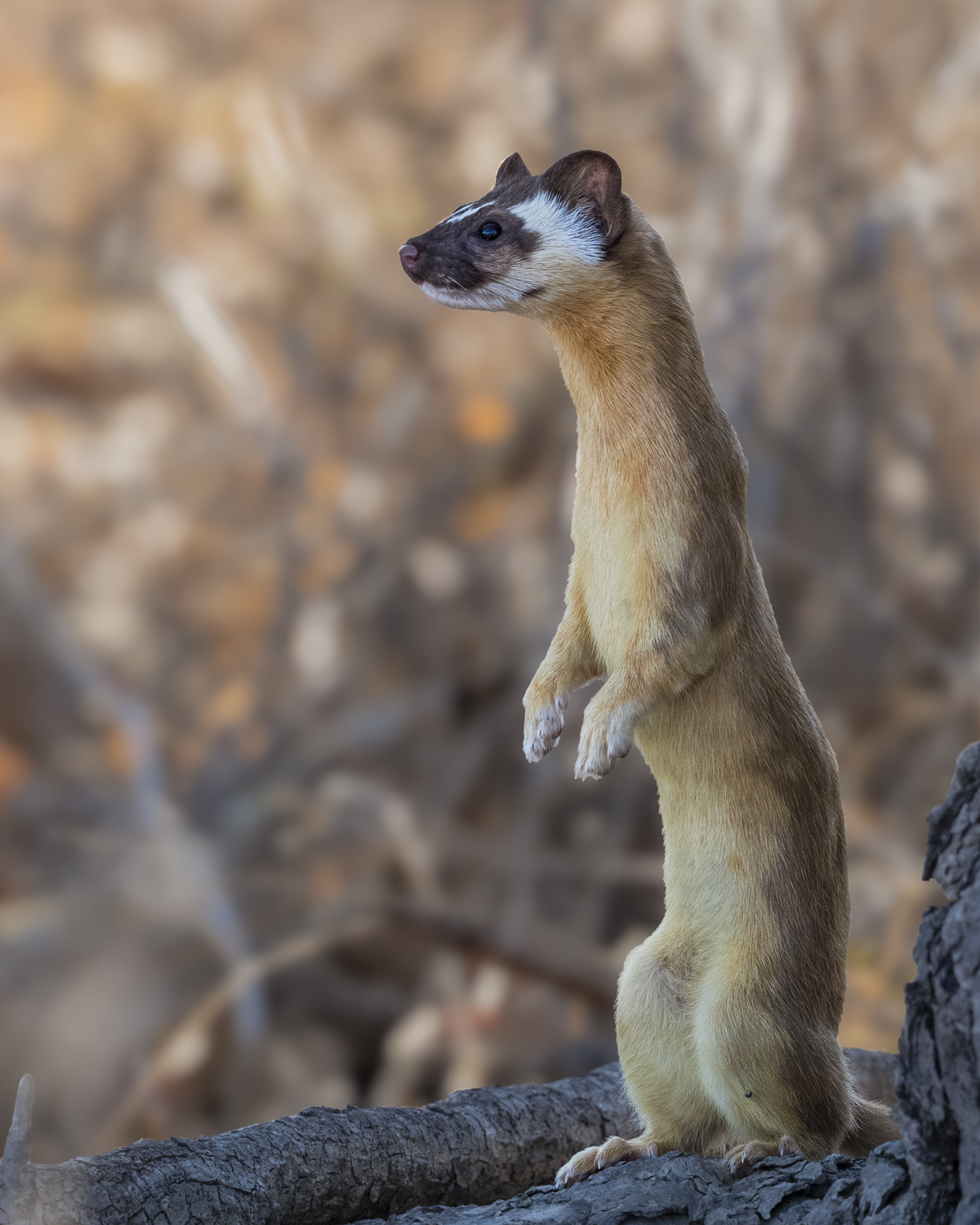
5. The boldness of youth
I see a lot of coyotes in my many hours out in the field, but I hardly ever get a chance to take pictures of them. They’re just very nervous around people. Usually, they’re far away, and running.
In spring of 2019, my luck changed when a friend found a den of five adorable coyote pups in some green shrubbery, just 30 feet off a popular hiking trail. We were able to get great looks as they boisterously played and frolicked in front of their den. Surprisingly, unlike the adults, these pups didn’t seem bothered by our presence. In fact, they were very curious, occasionally walking within 10 feet of us to check us out. My heart was pounding in excitement as they approached, but we made sure to stay completely still and silent until their curiosity was satisfied and they walked off.
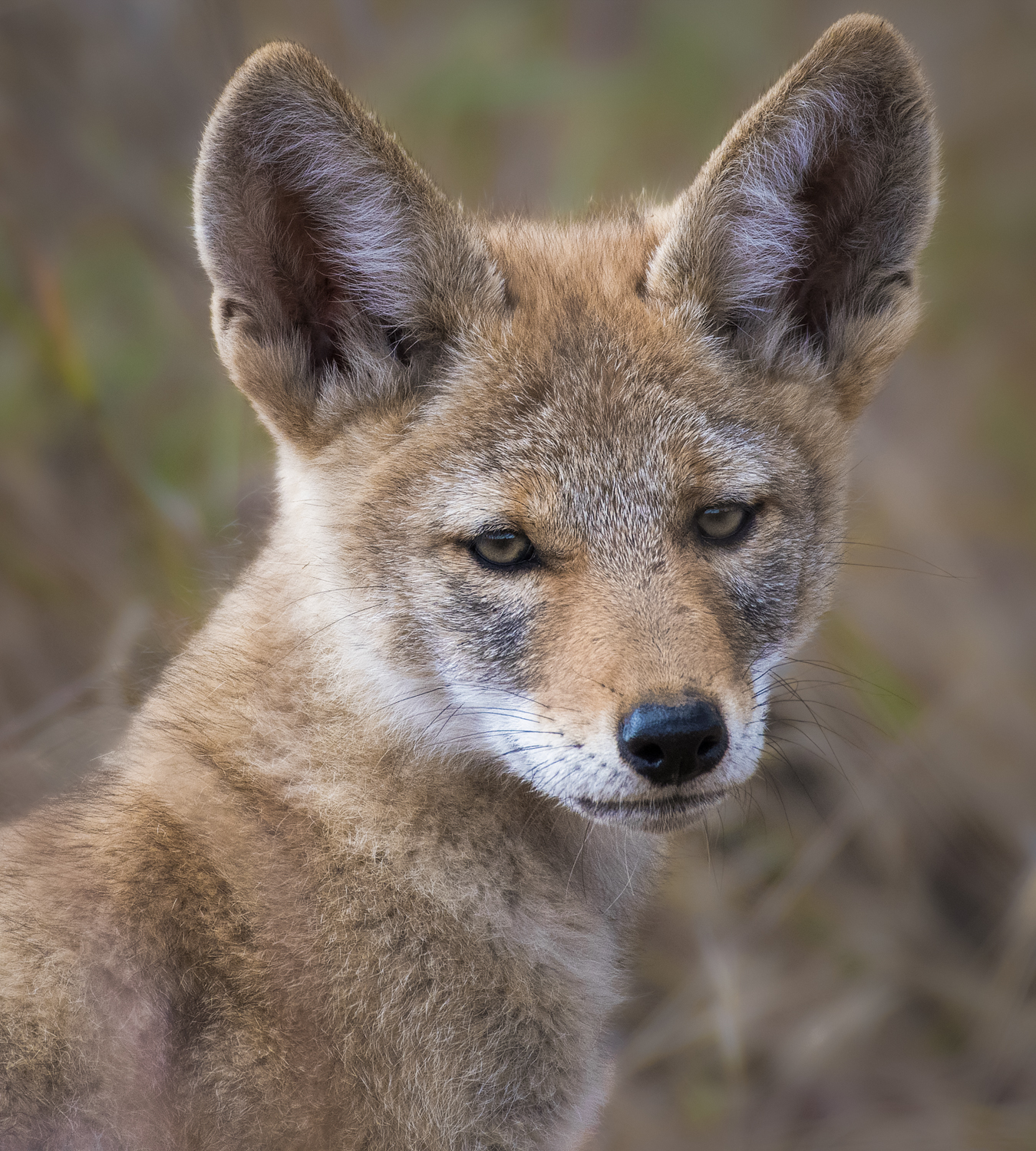
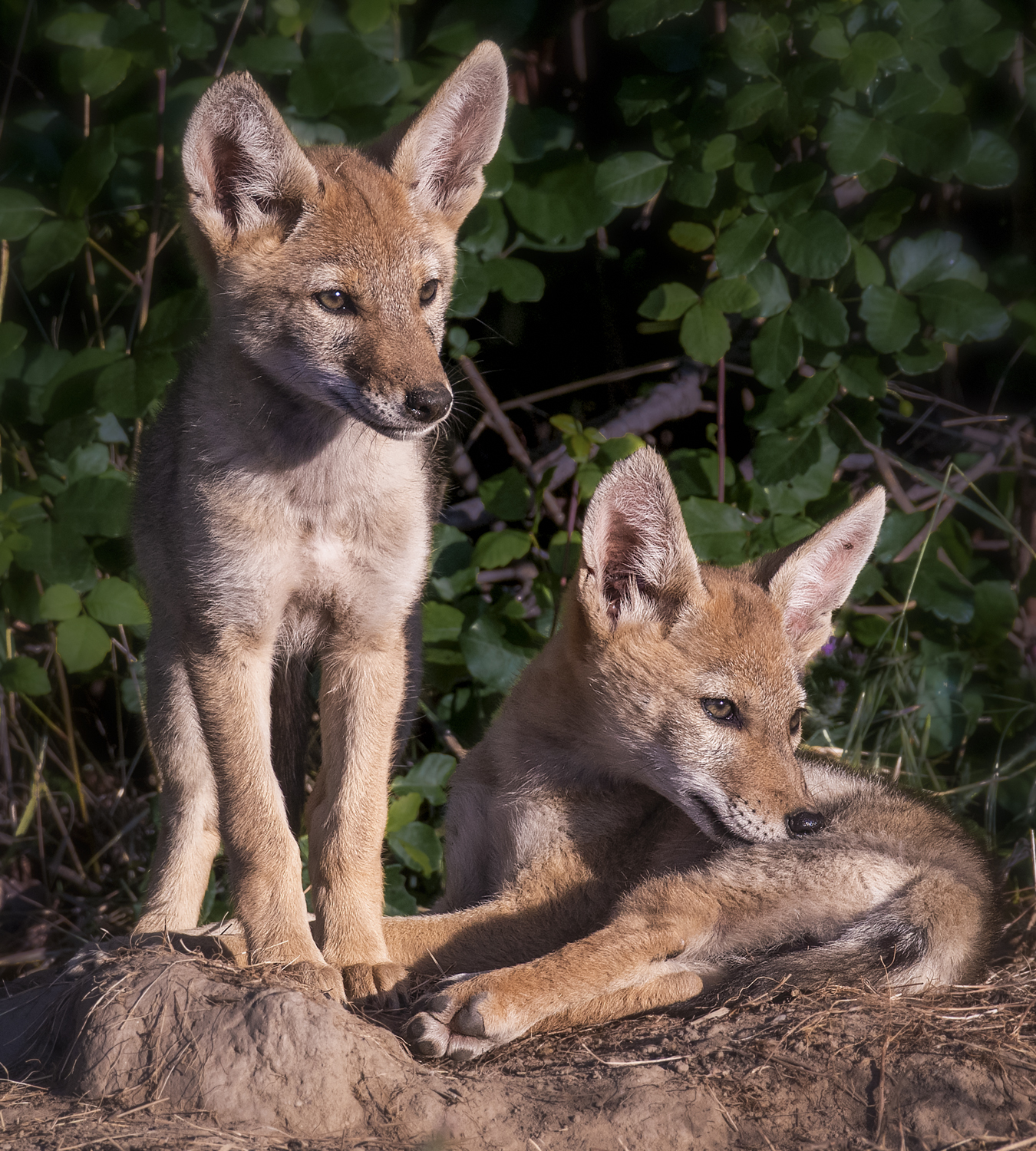
We came back the next week, and the pups had already moved out of this den—presumably to another one farther from the trail. They move dens regularly this time of year, so we weren’t surprised.

The first three photos are from that special encounter with the pups. The last photo, though, is of an adult, just so you can see how his face and body differ from those of the pups. This photo from 2021 was one of the few times I’ve been able to photograph an adult coyote in the East Bay. He seemed more tolerant than most other adult coyotes, so when I saw him walking down the trail, I quietly moved off trail a bit and laid down on the ground to lower my profile. He then proceeded to walk right past me, allowing me to take this picture. I was thrilled to see him so up close and finally get some photos of an adult coyote.
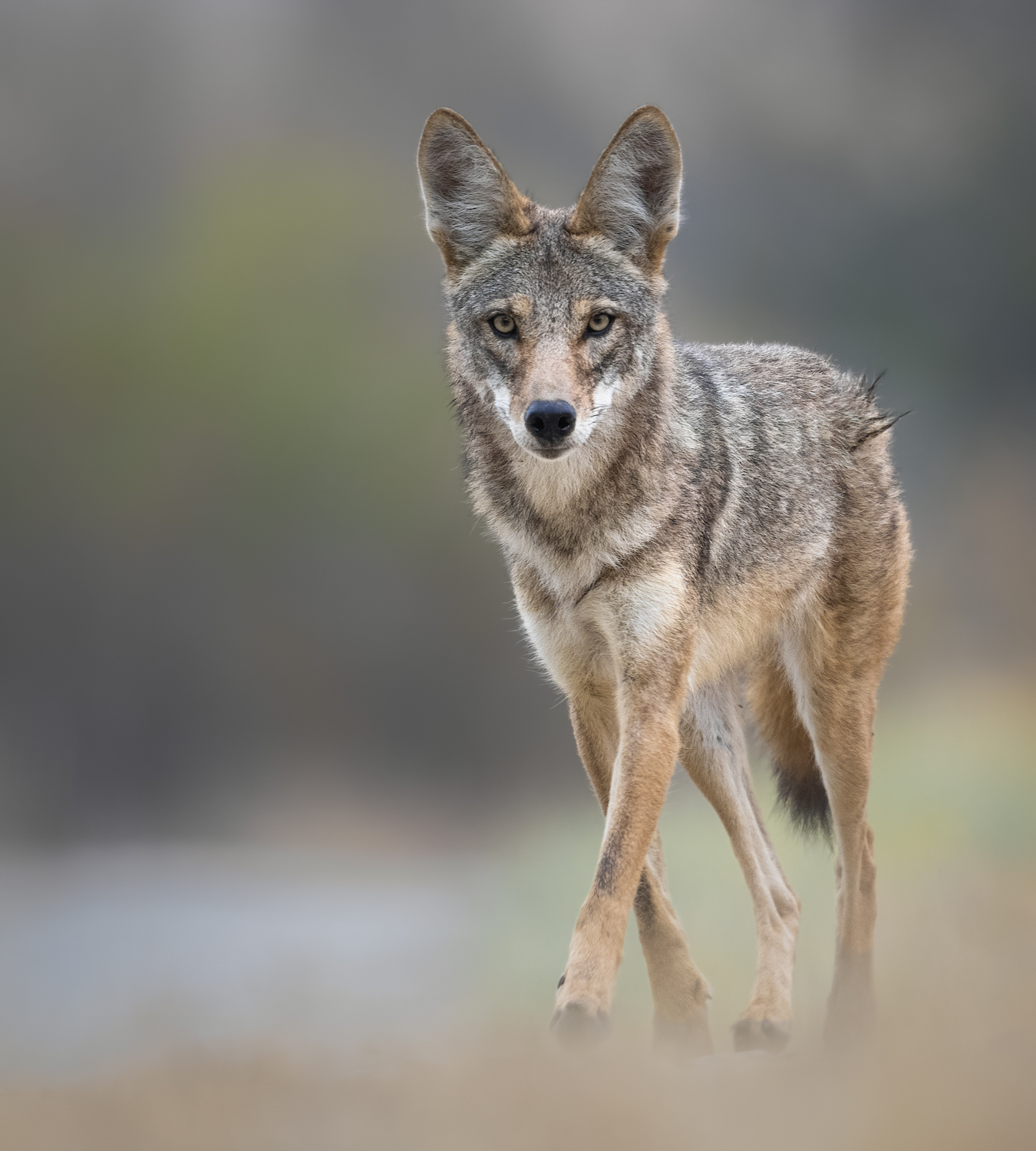
Coyotes often get a bad rap in the media, but I hope these photos will show they are intelligent, magnificent animals that play an important role in the ecosystem.
6. Night prowlers
These final images are from my recent experiments with camera trapping.
A DSLR camera trap is just a DSLR camera left out in the field (gulp!), protected by a weatherproof box. A motion sensor triggers the camera, and a transmitter on the camera triggers two off-camera flashes. In the Bay Area, I’ve been working with this method at UC Berkeley’s Blue Oak Ranch Reserve with special permission—it’s a biological field station meant for scientific research and education.
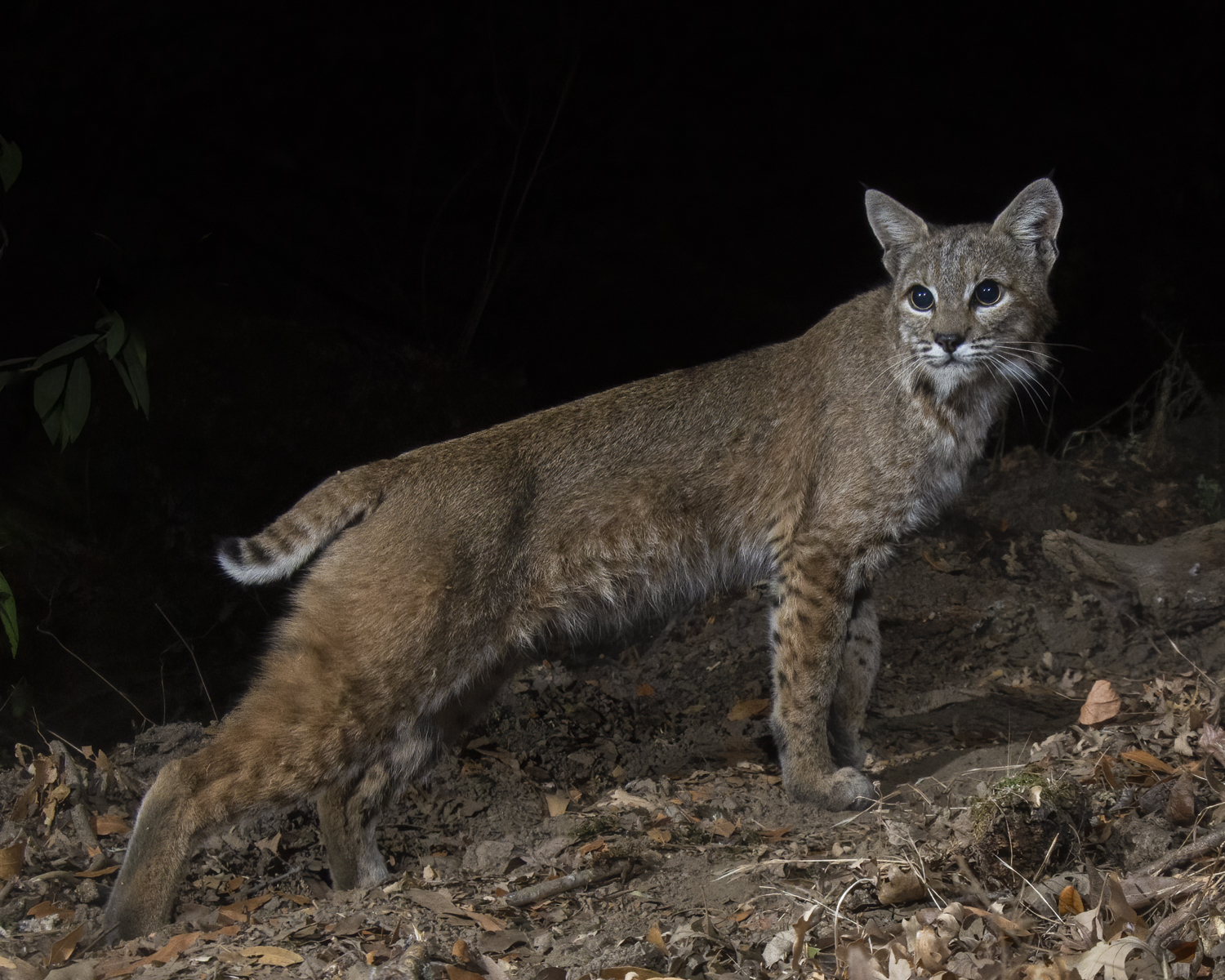
I started camera trapping originally to capture images of mountain lions. But I quickly became addicted to the technique when I saw how it allowed me to capture more elusive animals and incorporate more habitat into images (in daytime images, I normally use a very long lens to avoid spooking my subjects—and that long lens has a super narrow depth of field, so it blurs the background). I also love the technical challenge. A DSLR camera trap has many working parts. Learning each one in turn has forced me to level up my mastery of composition and light.
This style of photography has also helped me deepen my understanding of animal movements. To find the right spot, I have to think about it from the animal’s perspective. If I were a mountain lion, where would I want to be? I think about how a place’s topography, the direction of the dominant wind, edge habitats, prey sources, and water sources can all play roles in how wildlife move across the landscape.
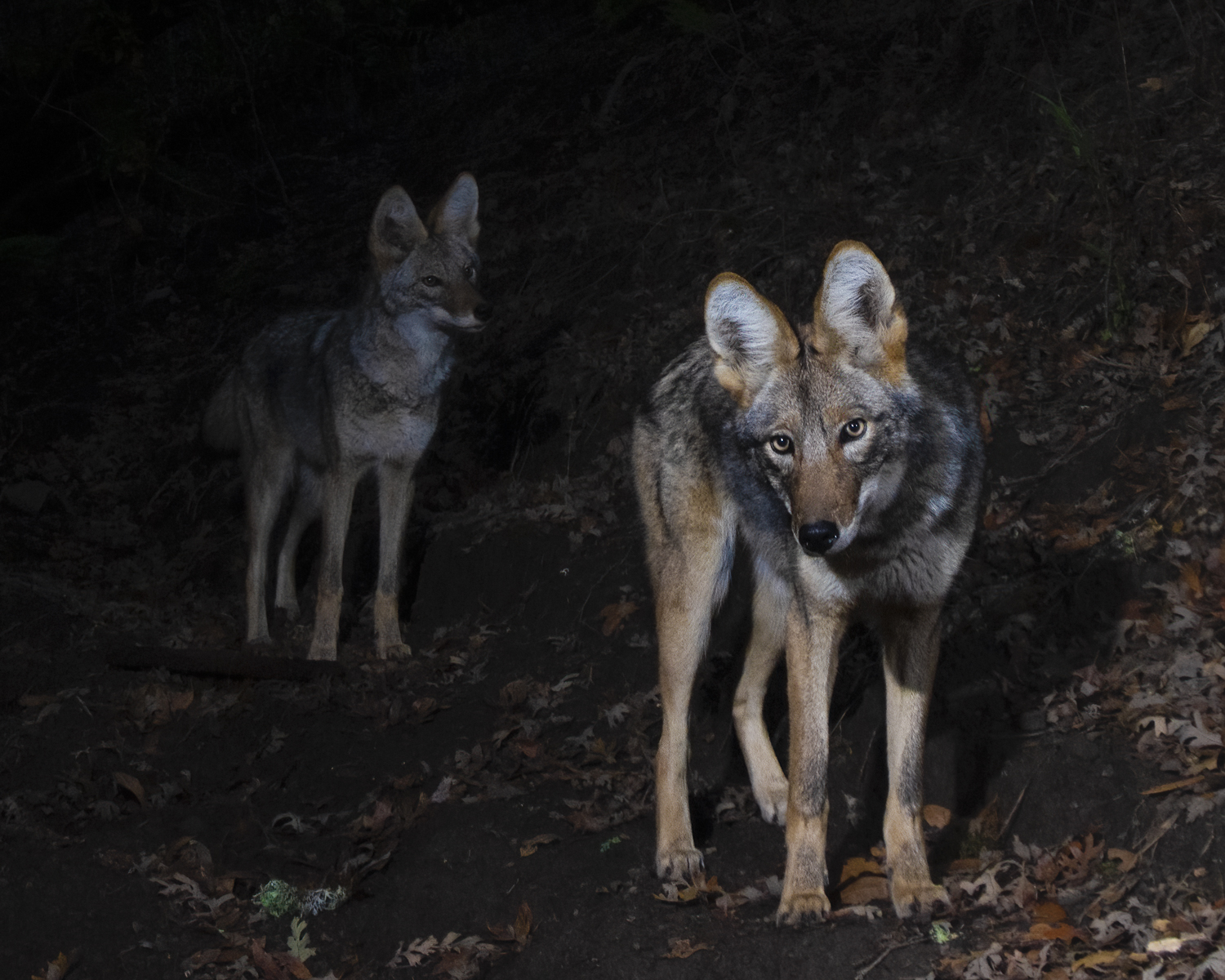
My nighttime camera traps have captured bobcats and coyotes in the San Jose hills as pictured above. I’ve also photographed mountain lions with this technique in other parts of the state. There are few things as exciting as going to open up a camera trap, and seeing what it captured while I wasn’t around.
This is, I hope, the kind of work I’ll be doing for a long time as a conservation photojournalist. I believe visual storytelling has the power to create meaningful change for wildlife, by sharing their struggles and inspiring people to help protect them.
Follow Vishal Subramanyan on Twitter @vishalfoto, Instagram @vishalsubramanyan, and Facebook at Vishal Subramanyan Photography.



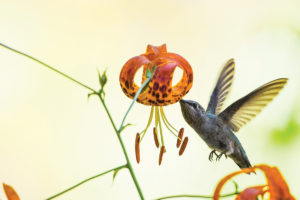
-300x221.jpg)